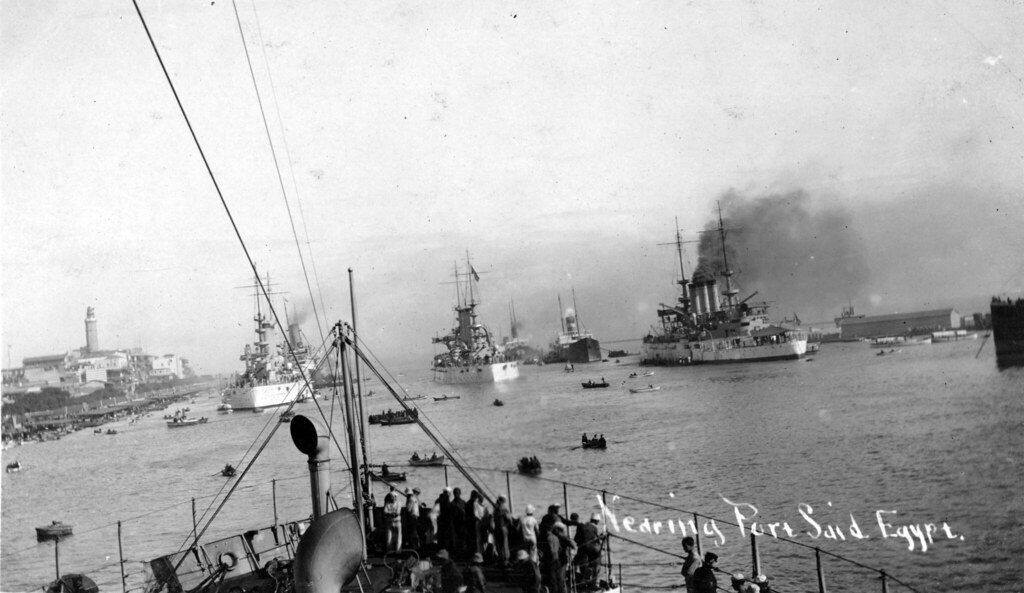Anchored off Naval Operating Base, Yokosuka, Japan, during a break from Korean War operations, 1 December 1950. Note old fortification in the left background. Official U.S. Navy Photograph, now in the collections of the National Archives (photo # 80-G-424599).
Oriskany moored at Yokosuka, Japan, circa 1952-53, with a Commencement Bay-class CVE alongside and US-built Tacoma-class frigates in the background. Note the dusting of snow on the flight deck, loaded with Skyraiders and Panthers of CVG-102/CVG-12. The emergency conn is barely discernible under the overhang of the flight deck, just abaft the Mk-63 director controlling her two foremost twin 3"/50s. US Navy photo # USN-1171842.
"It's a rare sight to see a Destroyer Tender alongside an Aircraft Carrier. As a matter of fact, no one here knows whether it has ever happened before."
"Recently, however, at Leyte pier in NAS Cubi PT, Bataan, Republic of the Philippines, USS Bryce Canyon (AD-36) wrote a new page in Western Pacific history by going alongside USS Oriskany (CVA-34) The event was occasioned by a serious fire which had broken out in Oriskany while operating off the Vietnam coast. As soon as the ships were moored together, Bryce Canyon's repair personnel swarmed aboard the carrier, and commenced around-the-clock operations. First on the agenda was the immediate recharging of some 107 CO2 fire extinguishers, which had been used in fighting the blaze. At the end of six days, all repair work was completed. Every one of the seventy ventilation and heating systems, as well as all electric motors in the damaged area had been checked out and restored to order. During this period, working parties from the tender had also pitched in with Oriskany sailors and personnel from SRF Subic, in cleaning up the fire and smoke damaged areas to make them habitable. Elsewhere aboard the tender, skilled technicians worked on countless jobs not immediately associated with the fire damage, giving the carrier a tender availability the like of which she had never seen. On conclusion of work, Bryce Canyon's modern electronic accounting machine installation tallied the results of her 6-day effort. In all, a total of 6,019 manhours had been expended; the equivalent of a two week availability for four destroyers."
"As both ships got underway at the crack of dawn on the sixth day, Oriskany sent the following visual message to the tender: "Your outstanding service and voluntary assistance in removing our scars is greatly appreciated. The willingness to work and your speed and efficiency helped us leave Subic Bay in outstanding shape for our transit home. Well done to all men aboard Bryce Canyon!"(Quoted from USS Bryce Canyon's Cruise Book.)
USS Oriskany (CVA-34) moored at Leyte Pier, Cubi Point Naval Air Station, Subic Bay, Philippines, 30 November–2 December 1971, at the end of her 6th Vietnam cruise.

